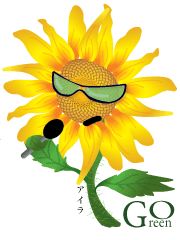
Lab Information for Winter 2014/2015:
Dates | Scheduled lab(s) |
|---|---|
| 12 - 16 January | Lab 1 - Photosynthesis |
| 19 - 23 January | Lab 2 - Algae AND Lab 3 - Fern life cycle* |
| 26 - 30 January | Lab 4 - Fungi (Fermentation, Diversity and Sex**) |
| 2 - 6 February | Lab 5 - Bryophytes |
| 9 - 13 February | Lab 6 - Seedless Vascular Plants |
| 16 - 20 February | Reading Week |
| 23 - 27 February | Lab 7 - Gymnosperms |
| | |
| | |
| | |
| | Lab 9 - Angiosperm Anatomy Project*** |
| | Lab 10 - Fruit and Vegetable Anatomy Project**** (extra credit lab) |
* Note: The Fern life cycle lab extends across several weeks.
** Note: The fungal sex lab begins during Lab 5, and extends across several weeks.
*** Note: You will be required to obtain a flowering plant for study in the
Angiosperm Project.
****Note: You will be required to obtain the fruit or vegetable for study in the Fruit and Vegetable Anatomy Project
Lab Marks will be provided on Moodle
General Lab Information
Data Analysis [pdf]Academic Integrity
- Here is a stem-and-leaf plotter.
- And a online tutorial on statistical analysis (courtesy of Chris Luszczek).
Please pay especial attention to issues of plagiarism. Please don't use sentences (or more) from publications in your lab reports. It's your explanation, your voice that are important to us! Here is a helpful resource on academic integrity and plagiarism.
Photosynthesis Lab Information
Photosynthesis Lab Exercise (in case you have been unable to get a lab manual) [pdf]
Controls [pdf]
Algae Lab Information
Algae Key [pdf]
The DVD (The kingdom protista: the dazzling world of living cells.) -portions of which are shown in the Algae Laboratory- is available from the Sound and Moving Image Library (in Scott) (DVD 11591 DVD-4HR reserve SMIL-DESK). The whole DVD is an extraordinary exploration of Protist Diversity, highly recommended. Most biologists describe it as a 'must see!' 'two thumbs up!' movie experience.
Fungi (Fermentation and Fungal Sex) Lab Information
Yeast Fermentation Information [pdf]
Calculations [pdf]
Neurospora crassa Life Cycle [pdf]
Neurospora article Evidence for safety of Neurospora species for academic and commercial uses
Bryophytes (and Lichens)
Bryophytes and Lichen Handout [pdf]
Fern Lab Information
Fern Lab Information [pdf]
Fern Life Cycle [png]
C-Fern Development Images [link]

C-Fern Movie (time lapse germination from Philip Lintilhac) [vimeo video]. Some 'homemade' movies of spermatazoid swimmers are also available (both quicktime): near male gametophyte and at female notch.
C-fern #1 journal article The biology of the fern Ceratopteris and its use as a model system
C-fern #2 journal article Ceratopteris: An ideal model system for teaching plant biology
C-fern #3 journal article Gametophyte development in ferns
C-fern #4 journal article Sex determination in the fern Ceratopteris
Growing Your Fern [pdf]
Seed Bearing Vascular Plants - Gymnosperms
Conifer Key [png]
Section of oak [png]
Pollen Lab Information
Pollen tube growth information. Rubric for lab report
Pollination Identification Tips [pdf]
Angiosperm Lab Information
Angiosperm lab information [pdf]
Angiosperm notes [pdf]
Fruit and Vegetable Nutrition
Lab 10 -- Fruit and Vegetable Dissection Project (worth 1% extra credit)
 Objective: To learn about nutritional content of plants and explore the
diversity of specialized cell types produced by plant cell differentiation and
to see how these cells can be assembled into a fruit or vegetable.
Objective: To learn about nutritional content of plants and explore the
diversity of specialized cell types produced by plant cell differentiation and
to see how these cells can be assembled into a fruit or vegetable.
This is an independent project! Rather than giving you prepared slides of plant parts showing the diversity of cell types and catalogs of plant anatomy, you will have to explore the specialized cell type and anatomy of the fruit or vegetable you select on your own. This is a one-week exercise [pdf].
Before the Lab Exercise: You will download nutritional information about the fruit or vegetable you select. You will compare this with the 'Daily Minimal Dietary Requirements'. Both are available via searchable links on the course website (look below). You should highlight the most beneficial nutritional attributes of the fruit or vegetable you select.
During the Lab Exercise: You will section and stain structures of interest in your fruit or vegetable and draw them, with scales. Your drawings, labeled, will be handed in with the information you obtained on nutrition at the end of the lab exercise.
(from US Food and Drug Administration Nutrition Information)
- Raw Fruit Nutrition [common fruits]
- Raw Vegetable Nutrition [common vegetables]
- Nutritional Requirements [daily values]
(from the USDA National Nutrient Data Laboratory)
- Searchable Database
- Direct Search (not working...)
You will need to download Adobe Acrobat Reader in order to view the [pdf] files.
There is some information regarding the lab quizzes available.

